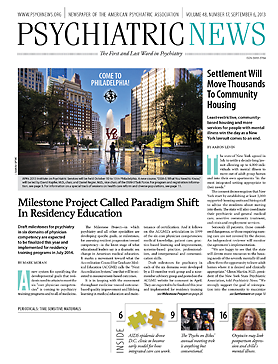The Fairfax County Public Schools, in the Virginia suburbs of Washington, D.C., have enlisted sleep specialists at the Children’s National Medical Center in Washington, D.C., to develop a plan to delay the county high schools’ start time to 8 a.m. or later.
The nation’s 11th-largest school district, Fairfax County serves more than 181,000 students in 196 elementary, middle, and high schools. The county has 28 high schools, serving diverse populations.
In a 2011 survey, two-thirds of Fairfax County students in grades 8, 10, and 12 reported sleeping seven hours or less on an average school night. Further, 17 percent of students in grade 10 and 26 percent in grade 12 said they averaged less than five hours of sleep per night.
Biological-rhythm research shows adolescents are not physiologically ready for sleep until about 11 p.m. Nearly all of Fairfax County’s public high schools, however, start at 7:20 a.m.
“The scientific evidence is irrefutable: chronic sleep loss and disruption in circadian rhythms associated with early high school start times are associated with negative consequences,” said Judith Owens, M.D., director of sleep medicine at Children’s National Medical Center. These include poor academic performance, increased sports-related injuries, and potential long-term increases in cardiovascular and metabolic health risks, such as type 2 diabetes.
Over the next eight months, the medical center’s sleep specialists will reach out to the community, Daniel Lewin, Ph.D., associate director of pediatric sleep medicine at the hospital, told Psychiatric News.
They will develop models of how different approaches will likely affect various groups and prepare options for the Fairfax County School Board’s consideration.
Lewin and Owens will conduct a needs assessment and a review of best practices used by school districts elsewhere that have delayed start times.
They also will hold town-hall meetings to gain insight into community concerns, Lewin said, and will survey students, parents, teachers, coaches, after-school-program directors, community organizations, and other individuals and groups that would be affected by a start-time change. He said he hopes pediatricians, psychiatrists, and other physicians will address student mental and physical health issues.
If funding is available, Lewin noted, the researchers plan to assess sleeping and waking behavior in at least a subsample of students and parents using actigraphy.
A change in school start time will affect transportation, families dealing with before- and after-school care, sports, businesses that employ students after school, and more, he noted. The researchers will seek to minimize cost and disruption to the community.
Fairfax County currently has 1,500 buses and uses a three-tiered system, delivering high school students earliest, middle school students next, and elementary school students last. “We may recommend a flip, with the younger students starting school earliest, which is biologically optimal,” Lewin said.
The busing system is complex, he noted, with rules about how long students can be on buses and how far they may walk to buses. In areas without sidewalks, for example, children need to be picked up at the bottom of a driveway. Every day, the system needs to find the 300 or so homeless children in the county. And at some specialty schools, such as a magnet school for science, children arrive on buses from all over Northern Virginia.
Part of the decision-making process, Lewin explained, will involve economic modeling to take into account how many cars are on the road at the same time as school buses, as well as accident rates.
The sleep team plans to use an interactive Web site to engage in community feedback and provide updates and informational links during the research and planning process. It also will use social media to distribute news and information.
“On one hand, this process is complicated,” Lewin said, “and on the other, it’s simple: it’s about health, education, and safety. If you prioritize these, the rest will fall into place.” ■
